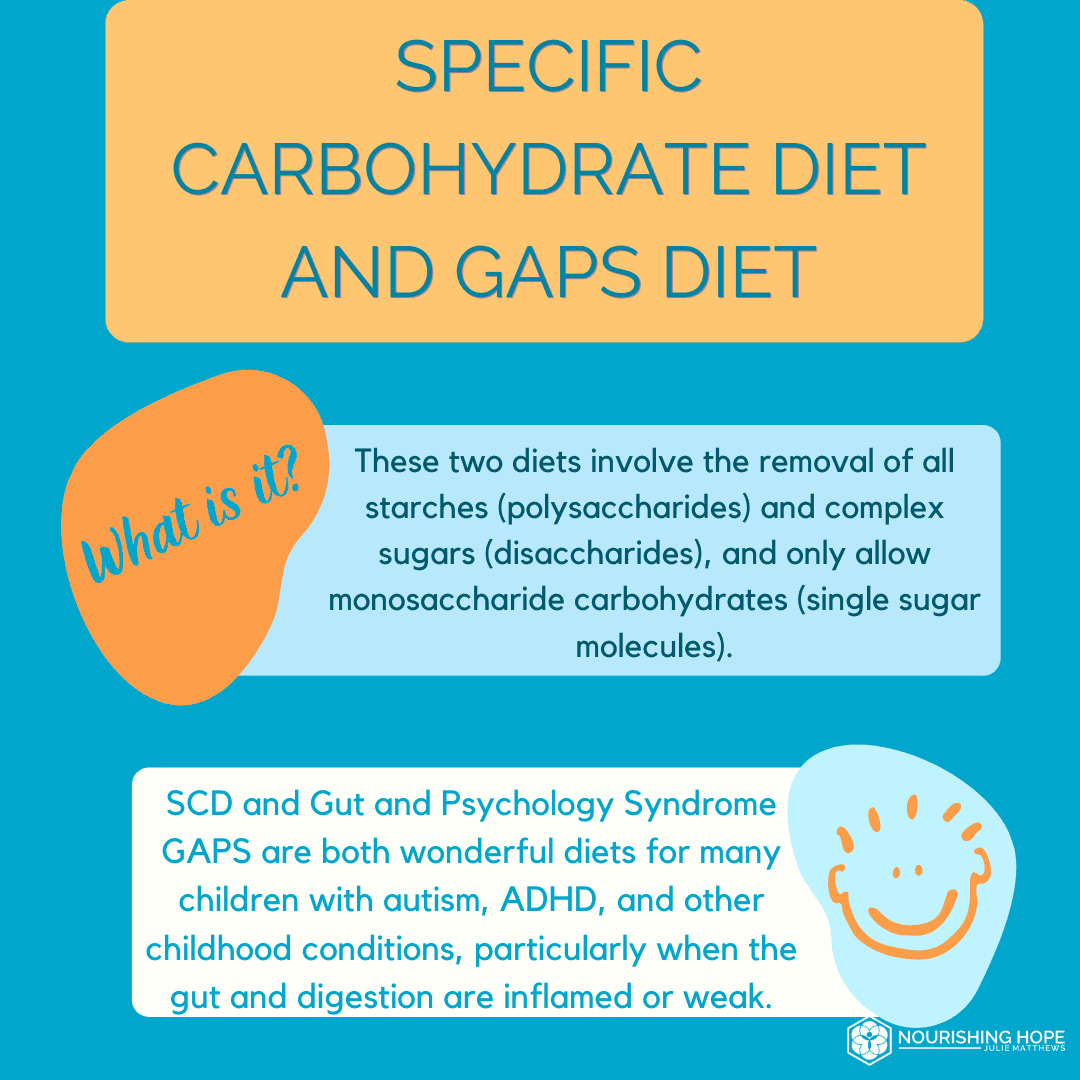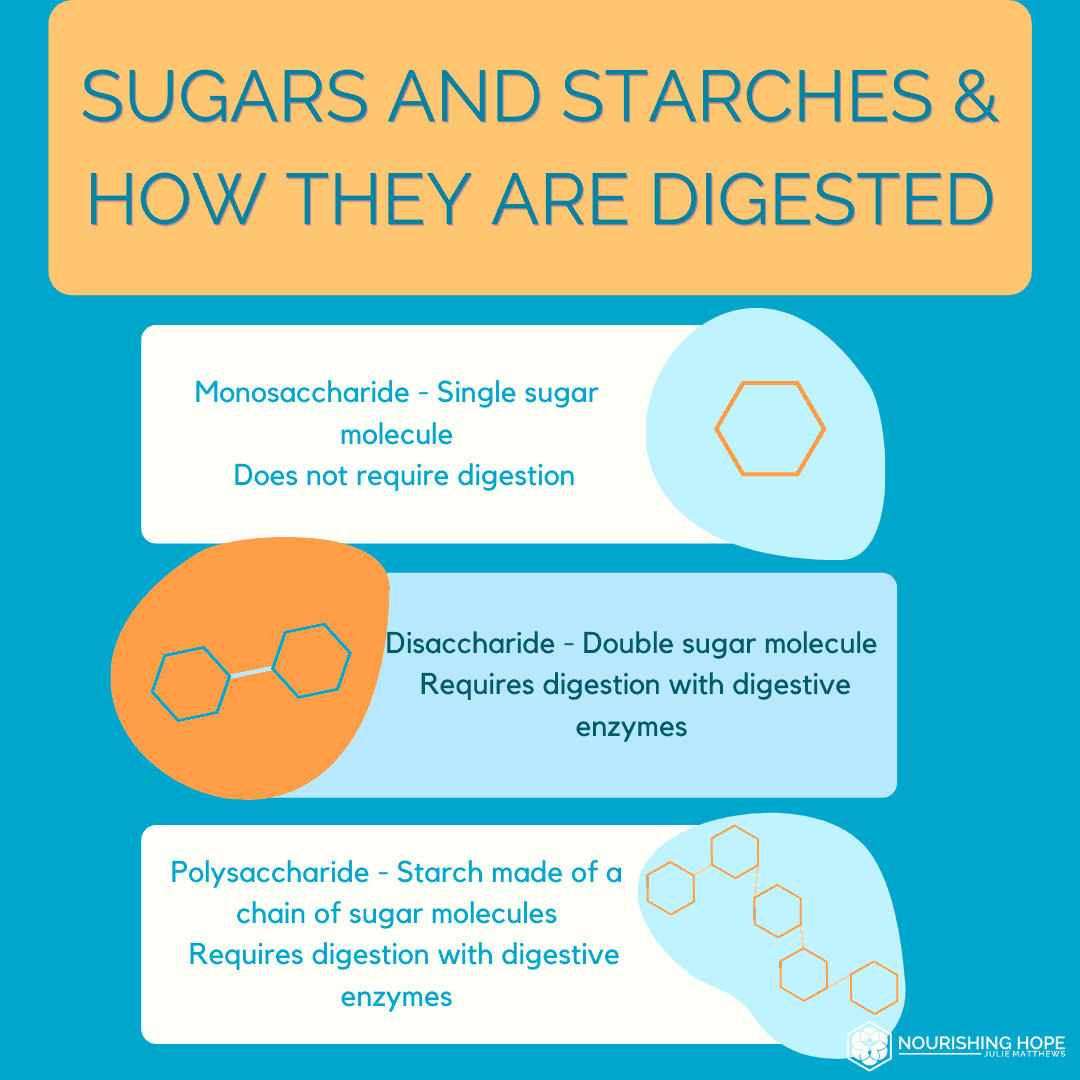Specific Carbohydrate Diet and GAPS Diet
I’ve found the Specific Carbohydrate Diet (SCD) and GAPS Diet to be the second most applied diet for autism (and other neurological disorders) next to gluten-free casein-free (GFCF) when it comes to individuals with digestive issues.
According to ARI (Autism Research Institute), 71% of parents say SCD was beneficial for their child. SCD was originally created for and used with inflammatory bowel conditions. This diet has become popular because of its ability to support and improve digestion and gut function. After realizing the increased rate of gastrointestinal problems in autism, SCD was brought to the autism community by Elaine Gottschall who used the diet to heal her daughter of ulcerative colitis. I had the privilege to meet and speak with Elaine while she was alive – she was quite an amazing woman. Her book, Breaking the Vicious Cycle, has been life-changing for many families.
The GAPS (Gut and Psychology Syndrome) Diet was created by Dr. Natasha Campbell McBride, who has expanded upon the original principles of the Specific Carbohydrate Diet to create a diet and healing protocol to support people with a variety of digestive disorders and subsequent psychological issues. She used this diet to heal her own son with autism, and it includes some specific diet and nutrition support beneficial to those with autism and other neurological conditions.
How the SCD and GAPS Diet Work
These two diets involve the removal of all starches (polysaccharides) and complex sugars (disaccharides), and only allow monosaccharide carbohydrates (single sugar molecules). Monosaccharides, glucose, and fructose are single sugar molecules found in honey, natural fruit sugar, and non-starchy vegetables.

When putting this diet strategy into place, parents (and individuals) remove maple syrup, cane sugar, agave nectar, brown rice syrup, and other sources of sugars from snacks and meals. SCD also removes all starches including all grains, corn, potatoes, and sweet potatoes – so quinoa pasta, rice milk, and french fries are out. Additional foods that are avoided that contain these ingredients include most baked goods, candy, jelly fruit snacks, granola bars, juices, fruit punch style drinks, ice cream, soda, chocolate milk, cereal, and other pre-packaged and freezer foods that contain sugar in their ingredient list – unless made with compliant ingredients.
The goal of the Specific Carbohydrate Diet is to reduce gut inflammation and aid healing by “starving out” bad gut “bugs” through avoiding sugars and starches that feed them. These disaccharides and polysaccharides require carbohydrate digesting enzymes, and when they are not present they remain in the gastrointestinal tract undigested and become food for the microbes and pathogens.

Studies show a subset of children with autism lack these enzymes and have digestive systems that are attacked by pathogenic organisms such as clostridia and yeast; they often need specific nutrition and diet support. By eliminating problematic foods, undigested food and inflammation in the gut decrease, and the yeast and bacteria (if present) are weakened. As these infections are eliminated from the body and intestinal enzyme function improves, people with autism and a variety of conditions experience healing. They feel better, sleep better, learn better, and autism symptoms are alleviated.
This diet is not a low carbohydrate diet but a “specific” carbohydrate diet that focuses on non-starchy vegetables, fruit, honey, and certain beans for carbohydrates and avoids other sugars and starches.
SCD Implementation
As parents implement the SCD, they cook meals for their children and family that are centered around meat, all non-starchy vegetables, fish, eggs, nuts and seeds, certain beans, and fruit. They introduce honey and fruit sugar to their recipes and meal preparation.
While dairy is technically allowed on SCD (in certain forms that have the sugars fermented into monosaccharides) like yogurt;, since so many children with autism and ADHD have reactions to dairy it is often omitted entirely. All of the SCD recipes on NourishingHope.com are dairy-free.
GAPS Diet Implementation
GAPS Diet includes the essentials of SCD, plus the addition of healing and nutritious principles such as fermented foods and homemade broths, as well as lifestyle and detoxification recommendations.
The GAPS diet recommends everyone begin the diet casein-free. GAPS has its own introductory diet, different from SCD. GAPS includes supplements such as cod liver oil and other essential fatty acids, potent probiotics (stronger than those allowed by SCD), digestive enzymes, vitamin and mineral supplements. The GAPS diet places more emphasis on supplements and allows some supplement ingredients (starches and sugars) that are “illegal” on SCD.
Gut and Psychology Syndrome GAPS and SCD are both wonderful diets for many children with autism, ADHD and other childhood conditions, particularly when the gut and digestion are inflamed or weak.
I teach parents and individuals in my Nourishing Hope for Healing Kids program and practitioners in my BioIndividual Nutrition Training that the right therapeutic diet can be extremely healing. But the key is determining the right diet for the individual.
You can learn more about these and other special therapeutic diets here. You can find SCD and GAPS Diet Recipes here.

